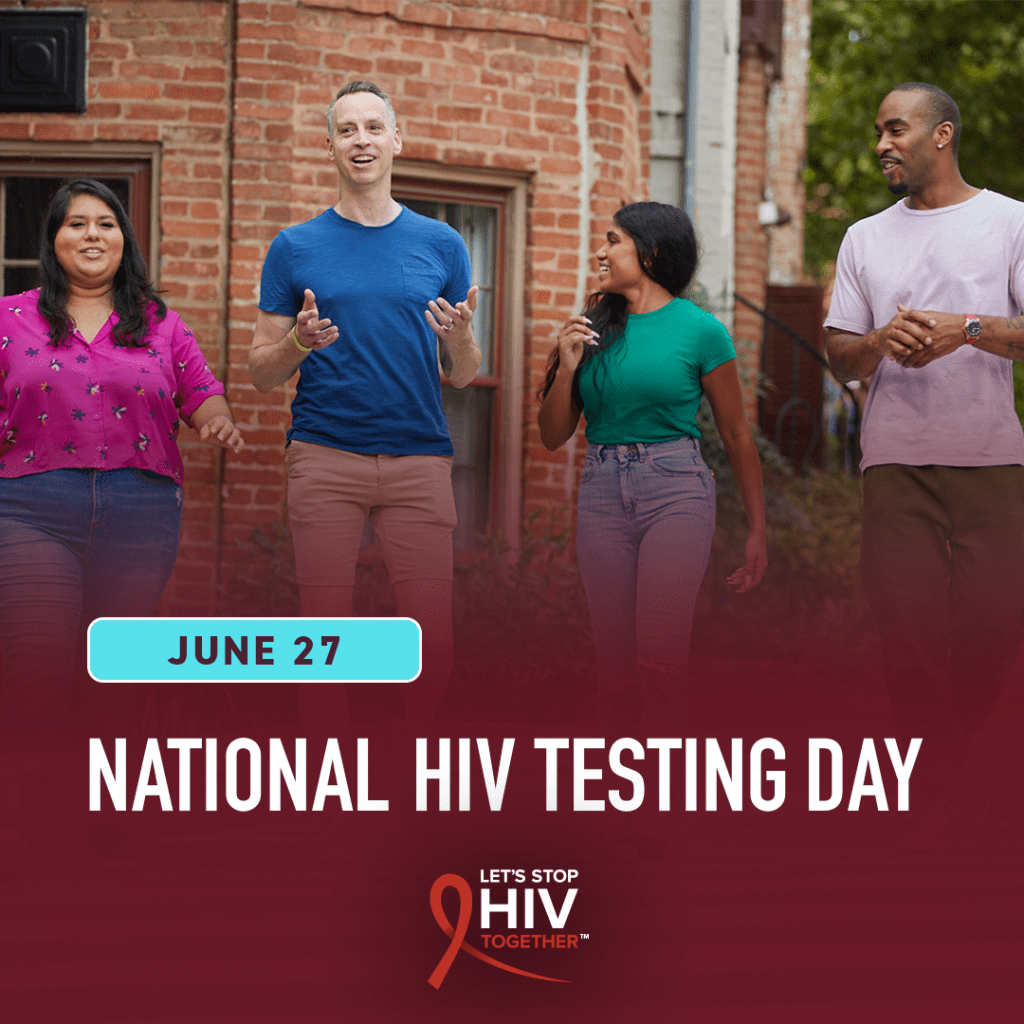
June 27th is National HIV Testing Day! First observed in 1997, this is a day intended to encourage people to get tested for HIV. This year's theme is “HIV Testing is Self-care.” Many of us have become more aware of the importance of self-care during the COVID-19 pandemic, and continue to focus on self-care as we navigate our current daily lives. But self-care is more than just enjoying some quiet time with a good book, going for a walk in nature, or taking a relaxing bath to unwind after a stressful day. Self-care is also about taking care of all aspects of your health. By getting tested for HIV, you are taking the first step towards knowing your HIV status and learning more about HIV prevention or pursuing treatment.
HIV, the virus that can cause AIDS if left untreated, can only be detected and diagnosed through testing. It’s recommended that everyone between the ages of 15 and 65 years old gets tested for HIV at least once. Pregnant people should also be tested as proper diagnosis and treatment can not only improve the health of the pregnant person but can also reduce the risk of transmitting HIV to the infant during pregnancy, childbirth, and breastfeeding. Individuals who are at a higher risk of contracting HIV (individuals who share needles or have sex without a condom) should consider being tested frequently.
HIV tests detect antibodies to HIV. Antibodies typically appear within 3-12 weeks after an individual is infected with HIV (Fauci, Folkers, & Lane, 2022). The most commonly used HIV tests are enzyme-linked immunosorbent assay tests, also known as EIA or ELISA tests (Adams & Woelk, 2014). ELISA tests are more than 99.9% accurate and are available as saliva tests (Adams & Woelk, 2014). Nucleic Acid Tests (NAT) look for the HIV virus in the blood and can detect HIV sooner than other types of tests (CDC, 2022). While many self-tests and rapid antibody tests can provide results within 20-30 minutes, NAT or antigen/antibody lab tests can take a few days to receive results (CDC, 2022).
Getting tested is as easy as going to your doctor’s office. Physicians and health care providers should consider including conversations about HIV testing with patients as part of providing regular routine care.
Finding a testing site is easy with the HIV Testing Sites and Care Services Locator.
You can also check out local testing options through DC Health, the Maryland Department of Health, or the Virginia Department of Health websites.
To learn more about HIV and HIV testing, check out these additional resources:
- HIV Risk Reduction Tool (CDC)
- HIV Basics (CDC)
- HIV.gov (US Department of Health & Human Services)
- Digital Toolkit for Clinicians (CDC)
There’s no better way to celebrate National HIV Testing Day this June 27th than to take or schedule your HIV test!
References:
Adams L.V., & Woelk G.B. (2014). Chapter 10. tuberculosis and HIV/AIDS. Markle W.H., & Fisher M.A., & Smego R.A., Jr.(Eds.), Understanding Global Health, 2e. McGraw Hill. https://accessmedicine.mhmedical.com/content.aspx?bookid=710§ionid=46796911
Centers for Disease Control and Prevention (CDC). (2022). Types of HIV Tests. https://www.cdc.gov/hiv/basics/hiv-testing/test-types.html
Fauci A.S., & Folkers G.K., & Lane H (2022). Human immunodeficiency virus disease: aids and related disorders. Loscalzo J, & Fauci A, & Kasper D, & Hauser S, & Longo D, & Jameson J(Eds.), Harrison's Principles of Internal Medicine 21e. McGraw Hill. https://accessmedicine.mhmedical.com/content.aspx?bookid=3095§ionid=265434013


